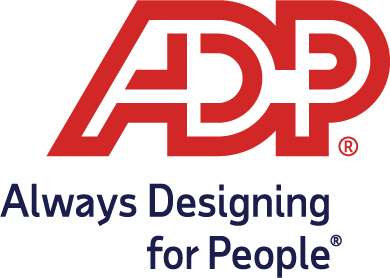Social Security
Benefits
Social Security Benefits
Social Security Benefits
How It Works
If you work for someone else, your employer withholds Social Security and Medicare taxes from your paycheck, matches that amount, sends those taxes to the Internal Revenue Service (IRS), and reports your earnings to Social Security. Ask your employer if you have questions about whether your job is covered by Social Security.
If you’re self-employed, you pay your own Social Security taxes when you file your tax return, and the IRS reports your earnings to Social Security. You pay a rate equal to the combined employee/employer share, but there are special deductions you can claim that offset your tax rate.
Improving Lives
Social Security has improved the lives of countless Americans.
- Social Security provides benefits to more than 63 million men, women, and children. In 2018, Americans will receive approximately $1 trillion in benefits.
- Nearly one in five Americans receives Social Security benefits.
- Social Security is a major source of income for most of the elderly. Payments to retirees make up 72 percent of the total benefits paid.
- Disabled workers and their dependents account for 16 percent of total benefits paid.
- Survivors of deceased workers account for 13 percent of total benefits paid.
How You Earn Credits
The Social Security Administration (SSA) uses your work history to determine your eligibility for retirement or disability benefits or your family’s eligibility for survivors’ benefits when you die.
In 2018, you receive one credit for each $1,320 of earnings, up to the maximum of four credits per year.
Each year the amount of earnings needed for credits goes up slightly as average earnings levels increase. The credits you earn remain on your Social Security record even if you change jobs or have no earnings for a while.
If You Are Self-Employed
However, an optional method can apply if your net earnings are less than $400 (optional method of reporting). All of your earnings covered by Social Security are used in figuring the amount of your Social Security benefit. So, it’s important that you report all of your earnings up to the maximum as required by law.
Special Rules
The SSA also has special rules about how you earn credits for other kinds of work. Some of these jobs are:
- Domestic work
- Farm work
- Work for a church or church-controlled organization that does not pay Social Security taxes.
Military
If you are in the military, you earn Social Security credits the same way civilian employees do. You also may get additional earnings credits under certain conditions.
Social Security Benefits Statements and my Social Security Accounts
If you don’t want to wait for your Social Security Statement to be mailed to you, you can view your Social Security Statement online. You also may be able to estimate your retirement benefit using the SSA’s online Retirement Estimator.
If you would like to request a Social Security Statement by mail, you can complete a Request for Social Security Statement (Form SSA-7004) and mail it to the SSA. Your statement will arrive in four to six weeks.
When you receive your statement, check your earnings history carefully. Make sure all of your earnings are accurate and be sure to report any errors to SSA. This is important, because your benefits will be based on your lifetime earnings. Your statement is also useful in helping you plan your financial future.
Not Every Kind of Work Counts Toward Social Security
- Most federal employees hired before 1984 (but since January 1, 1983, all federal employees have paid the Medicare hospital insurance part of the Social Security tax)
- Railroad employees with more than 10 years of service
- Employees of some state and local governments that chose not to participate in Social Security
- Children younger than age 21 who do household chores for a parent (except a child age 18 or older who works in the parent’s business)
Types of Social Security Benefits
- retirement
- disability
- survivors
These benefits above are not to be confused with Social Security Insurance (SSI) benefits, which are not financed by Social Security taxes.
Retirement
Benefits are payable at full retirement age (with reduced benefits available as early as age 62) for anyone with enough Social Security credits. The full retirement age is 65 for persons born before 1938. The age gradually rises until it reaches 67 for persons born in 1960 or later.
People who delay retirement beyond full retirement age get special credit for each month they don’t receive a benefit until they reach age 70. Even if you delay your retirement, you should file for Medicare three months before you turn 65.
Disability Benefits
Disability benefits can be paid to people at any age who have enough Social Security credits and who have a severe physical or mental impairment that is expected to prevent them from doing “substantial” work for a year or more or who are terminally ill.
The amount of monthly earnings considered “substantial” depends on the nature of a person’s disability. For statutorily blind individuals, the amount in 2018 is $1,970. For non-blind individuals, the amount is $1,180.
The disability program includes incentives to smooth the transition back into the workforce, including continuation of benefits and health care coverage while a person attempts to work.
Family Benefits
If you are eligible for retirement or disability benefits, other members of your family might receive benefits, too.
These include:
- Your spouse if he or she is at least 62 years old or under 62 but caring for a child under age 16
- Your children if they are unmarried and under age 18, under 19 but still in school, or 18 or older but disabled
- Your ex-spouse (even if you remarried) if your marriage lasted 10 years or longer and your ex-spouse is unmarried and age 62 or older
Survivors
When you die, certain members of your family may be eligible for benefits if you earned enough Social Security credits while you were working. The family members include:
- A widow(er) age 60 or older, 50 or older if disabled, or any age if caring for a child under age 16
- Your children if they are unmarried and under age 18, under 19 but still in school, or 18 or older but disabled
- Your parents if you were their primary means of support
- A surviving divorced spouse
A special one-time payment of $255 may be made to your spouse or minor children when you die.
Medicare
There are two parts to Medicare: hospital insurance (Part A) and medical insurance (Part B).
Generally, people who are over age 65 and getting Social Security automatically qualify for Medicare. So do people who have been getting disability benefits for two years. Others must file an application.
Part A is paid for by a portion of the Social Security tax of people still working. It helps pay for inpatient hospital care, skilled nursing care and other services.
Part B is paid for by monthly premiums of those who are enrolled and from general revenues. It helps pay for such items as doctors’ fees, outpatient hospital visits, and other medical services and supplies.
Recently, a new law was enacted to bring people with Medicare more choices in health care coverage and better health care benefits.
This new law preserves and strengthens the current Medicare program, adds important new prescription drug and preventative benefits, and provides extra help to people with low incomes.
Supplemental Security Income Benefits
The federal government pays a basic rate and some states add money to that amount. Check with your local Social Security office for the SSI rates in your state. Generally, people who get SSI also qualify for Medicaid, food stamps, and other assistance.
SSI benefits are not paid from Social Security trust funds and are not based on past earnings. Instead, SSI benefits are financed by general tax revenues and assure a minimum monthly income for elderly and disabled persons.
Make Sure Your Records Are Accurate
It is each individual’s responsibility to make sure his or her records are correct. Each year your employer sends a copy of your W-2 (Wage and Tax Statement) to SSA which compares your name and Social Security number on the W-2 with its records. When SSA finds your name and number, your earnings shown on the W-2 are recorded on your lifelong earnings record. Your lifelong earnings record is what is used to determine whether you can get future benefits and the benefit amount.
It is critical that your name and Social Security number on your Social Security card agree with your employer’s payroll records and W-2. If they do not agree, your employer may get a letter from Social Security. This letter does not mean that your employer should change your job, lay you off, fire you or take other action against you; you need to correct the error. It is up to you to make sure both records are correct.
If your Social Security card is not correct, contact any Social Security office. Tell your employer if your name or Social Security number is incorrect on the employer’s record.
Download this fact sheet or visit the SSA website for more information.
To get more information on Social Security, check out the following publications:
- How You Earn Credits – Publication No. 05-10072
- A “Snapshot” – Publication No. 05-10006
- Understanding the Benefits – Publication No. 05-10024
- If You are Self-Employed – Publication No. 05-10022
- Military Service and Social Security – Publication No. 05-10017



